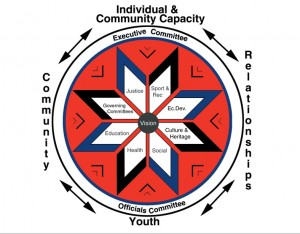Aboriginals are the fastest growing population in Canada. The 2006 census revealed that there are half a million First Nations, Métis, and Inuit people living in Canadian cities and that over 50% of this population is under 25 year old. Given the dramatic increase in urban populations, 60% of Canada’s Aboriginals now reside in urban settings, more research is sorely needed to understand how Aboriginals and Non-Aboriginals are relating in this atmosphere of rapidly changing demographics.
The Urban Aboriginal Peoples Study (UAPS) began to take shape when Michael Adams, founder and president of Environics Research Group and the non-profit Environics Institute, and Dr. David Newhouse, Chair of Indigenous Studies at Trent University, found themselves at a conference discussing social change among Canada’s Aboriginal groups. In response to the startling information emerging from the 2006 census, Dr. Newhouse asked: “Does the average Canadian have any image of who these people are, how they relate to their cities, what they are contributing, or what their challenges are?”
The approach being suggested by Dr. Newhouse differs from earlier studies that focused research on social-services being utilized by Aboriginal populations. That research tended to view Aboriginal communities through the lens of some problem or need— without the needed complexity to generate meaningful understandings of urban Aboriginal groups.
Hence the UAPS was born. The Study has been funded by the government of Canada, the governments of various provinces, some private organizations, Elections Canada, and the United Way. The goal of the UAPS was to gone beyond the numbers and capture the values, experiences and aspirations of Aboriginal peoples living in Vancouver, Edmonton, Calgary, Regina, Saskatoon, Winnipeg, Thunder Bay, Toronto, Montreal, Halifax and Ottawa. 2,614 First Nations peoples, Métis and Inuit living in these major Canadian cities, as well as 2,501 non-Aboriginal Canadians were surveyed.
Click here for the UAPS report summary, full report, or quick key findings from the study. City findings are also available such as the Vancouver City Report
This research is useful for anyone looking for comprehensive information about the dynamic interaction between Non-Aboriginals and Aboriginals in Canada’s major cities.
